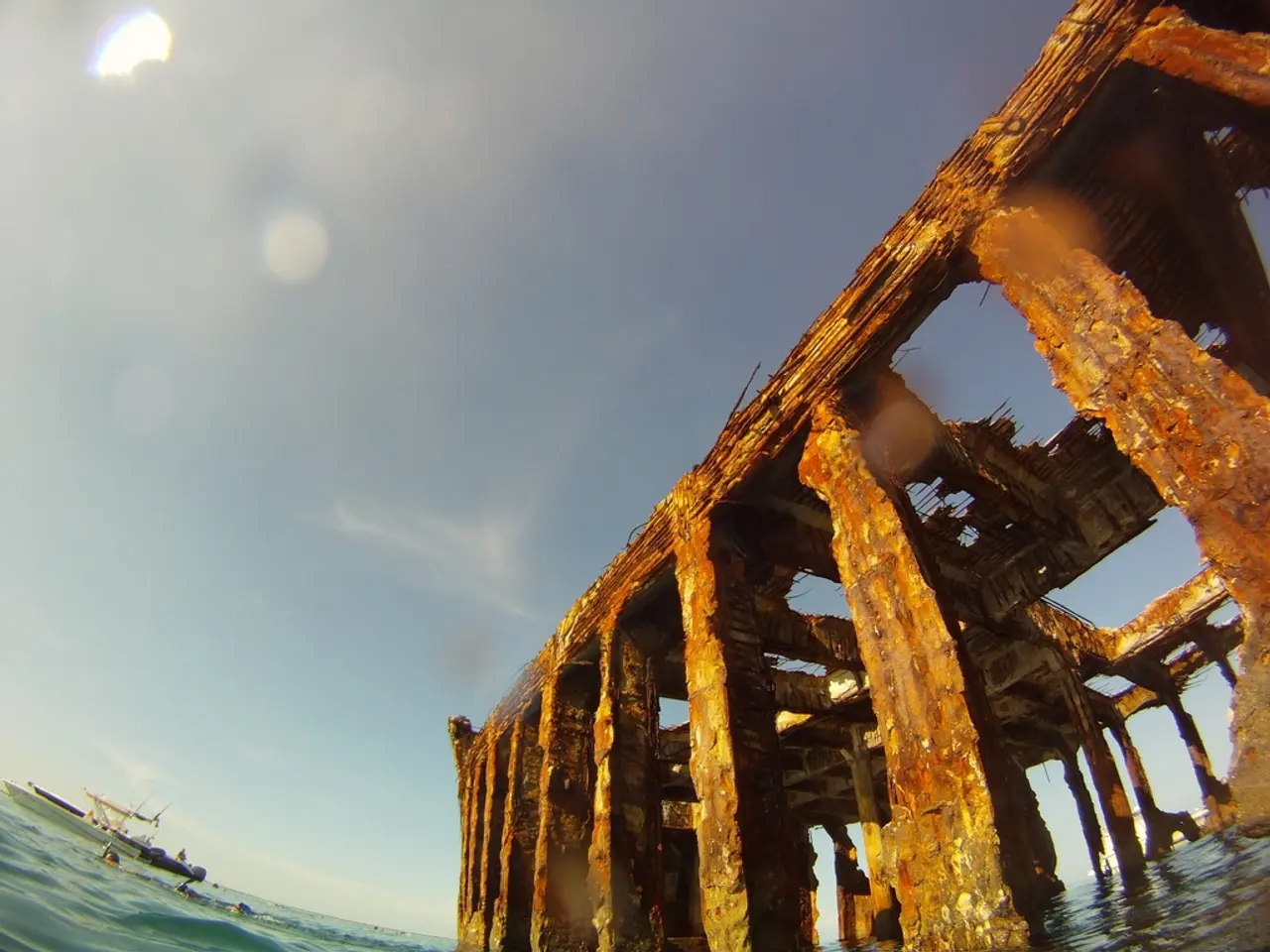Steadily Declining Trans-Pacific Shipping Container Costs: Expert Analysis
Container Spot Rates Moderate on Far East-U.S. Routes
The container spot rates on the Far East to U.S. routes have seen a significant decrease in recent weeks, primarily due to carriers' smarter capacity management and stabilising factors such as the extended pause on higher tariffs between China and the U.S.
The market average spot rate from the Far East to the U.S. West Coast is currently $2,098 per forty foot equivalent unit (FEU), a 3% decrease from July 31. This is the lowest since late 2023, and a 62% decrease since June 1. Similarly, the spot rate to the U.S. East Coast has decreased by 53% since June 15, and is now $3,311 per FEU, a 9% decrease from July 31.
Carriers have increased blanked sailings on the Far East-U.S. West Coast route to almost double the level in mid-June. The four-week rolling average of blanked sailings from the Far East to the U.S. West Coast has increased from 30,000 TEUs per week on June 22 to 57,000 TEUs on August 1. This strategy helps reduce capacity and support rates amid excess supply.
The impact of these blanked sailings on ports and logistics is that they reduce vessel calls and throughput at affected ports, thereby easing congestion but potentially causing scheduling disruptions and requiring adjustments in logistics planning.
In contrast, the market average spot rate from the Far East to North Europe is $3,330 per FEU, and to the Mediterranean is $3,372. The spread in average spot rates on Far East trades to North Europe and the Mediterranean is near equal at $42 per FEU. On June 1, the spread was $1,765. The market average spot rate from the Far East to North Europe has flattened after a 78% increase between May 31 and July 1, and has decreased by 2% since then. The market average spot rate from the Far East to the Mediterranean has declined a further 7% since July 31, and 26% since June 15.
Some observers have speculated that China was selling goods at drastic discounts to keep its factories running after U.S. tariffs amounted to an embargo with its most important trading partner. However, China's container volumes to Europe remained strong through much of the summer.
In summary, capacity management through blanked sailings combined with a tariff pause moderates rate declines, but overcapacity and demand softness continue to press rates down, with blanked sailings also affecting port call volumes and logistical flows.
- The decline in container spot rates emphasizes the influence of finance and business strategies in the industry, as carriers use blanked sailings to manage supply chain capacity and support rates amid excess supply.
- The spot rates on Far East-U.S. routes, particularly to the West Coast, saw a significant dip, with rates currently at $2,098 per FEU, a stark contrast to the spot rates for North Europe and the Mediterranean.
- Reduced vessel calls and congestion at ports due to blanked sailings can impact the transportation sector, leading to scheduling disruptions and logistics planning adjustments within the industry.




